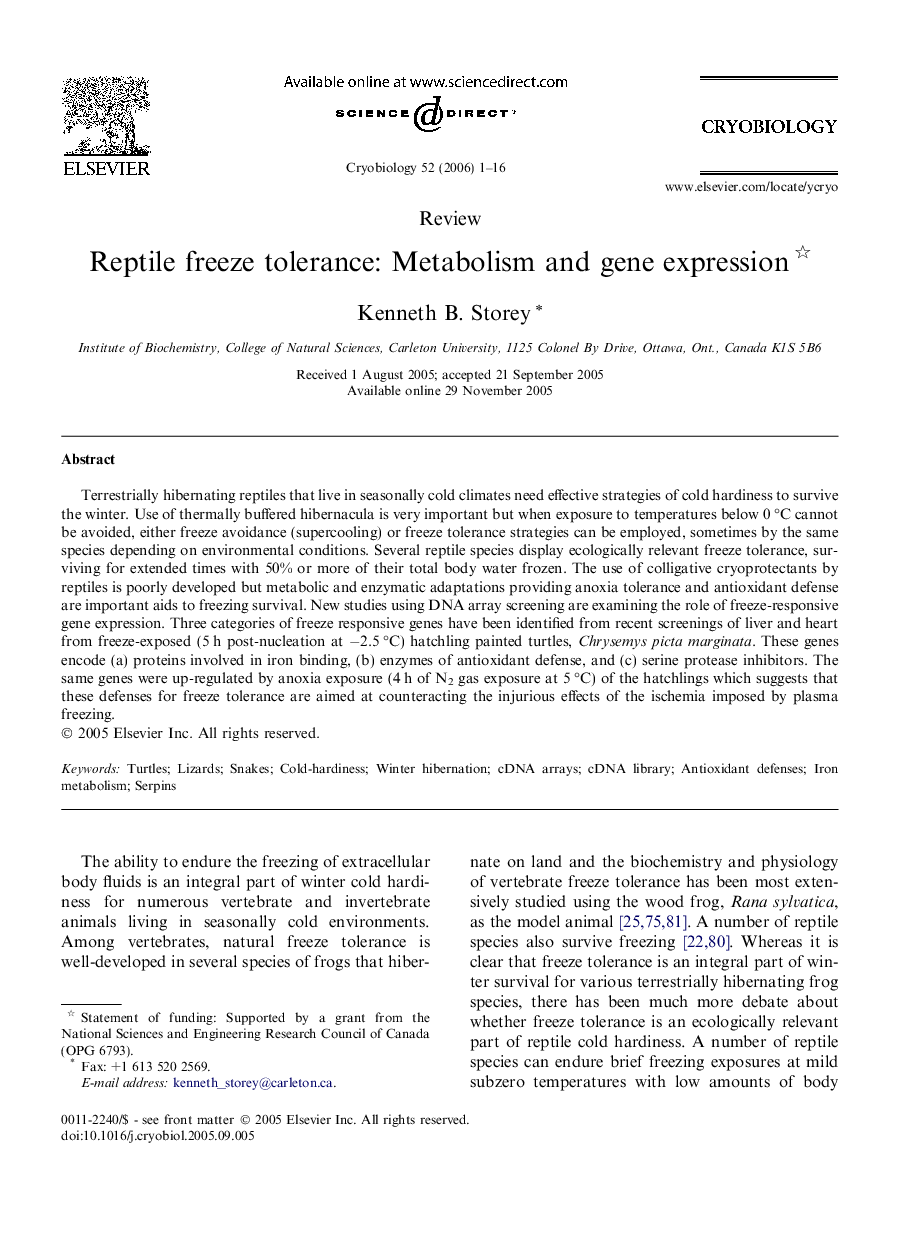| کد مقاله | کد نشریه | سال انتشار | مقاله انگلیسی | نسخه تمام متن |
|---|---|---|---|---|
| 2169621 | 1092954 | 2006 | 16 صفحه PDF | دانلود رایگان |

Terrestrially hibernating reptiles that live in seasonally cold climates need effective strategies of cold hardiness to survive the winter. Use of thermally buffered hibernacula is very important but when exposure to temperatures below 0 °C cannot be avoided, either freeze avoidance (supercooling) or freeze tolerance strategies can be employed, sometimes by the same species depending on environmental conditions. Several reptile species display ecologically relevant freeze tolerance, surviving for extended times with 50% or more of their total body water frozen. The use of colligative cryoprotectants by reptiles is poorly developed but metabolic and enzymatic adaptations providing anoxia tolerance and antioxidant defense are important aids to freezing survival. New studies using DNA array screening are examining the role of freeze-responsive gene expression. Three categories of freeze responsive genes have been identified from recent screenings of liver and heart from freeze-exposed (5 h post-nucleation at −2.5 °C) hatchling painted turtles, Chrysemys picta marginata. These genes encode (a) proteins involved in iron binding, (b) enzymes of antioxidant defense, and (c) serine protease inhibitors. The same genes were up-regulated by anoxia exposure (4 h of N2 gas exposure at 5 °C) of the hatchlings which suggests that these defenses for freeze tolerance are aimed at counteracting the injurious effects of the ischemia imposed by plasma freezing.
Journal: Cryobiology - Volume 52, Issue 1, February 2006, Pages 1–16